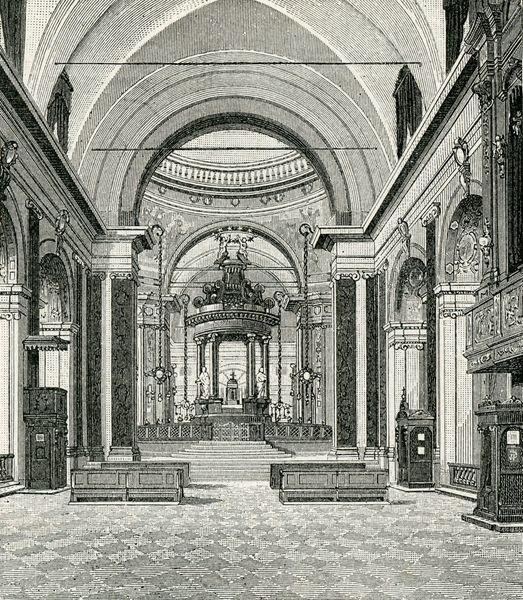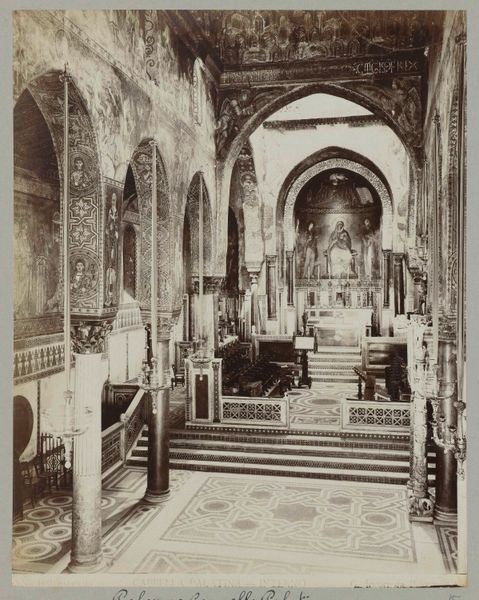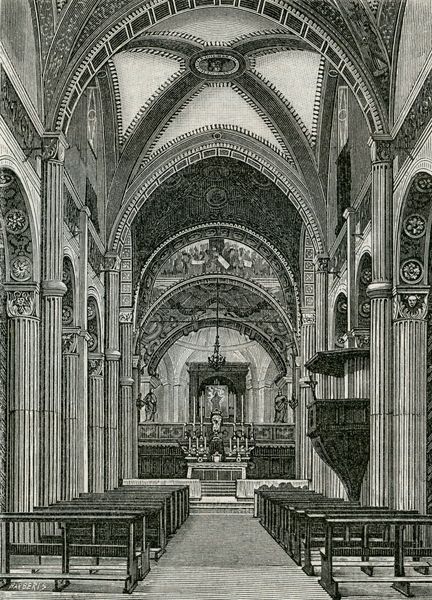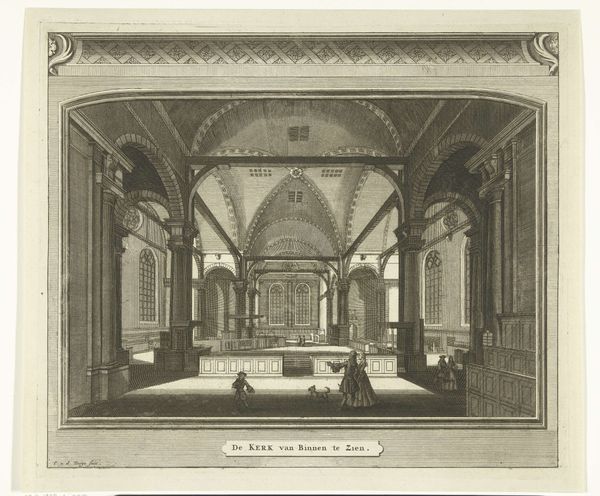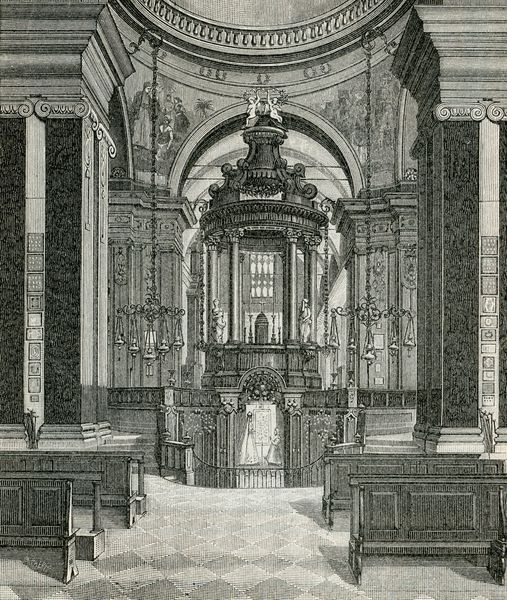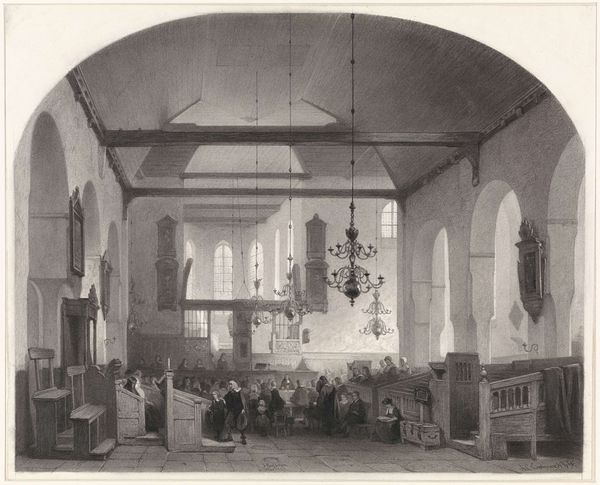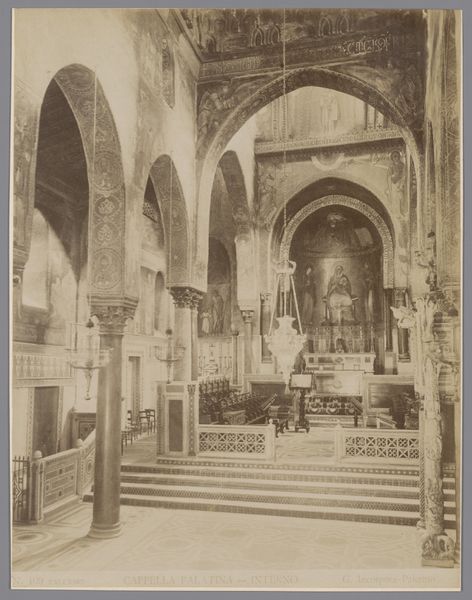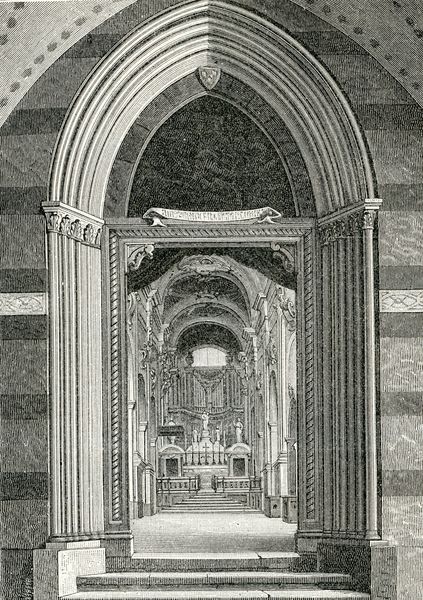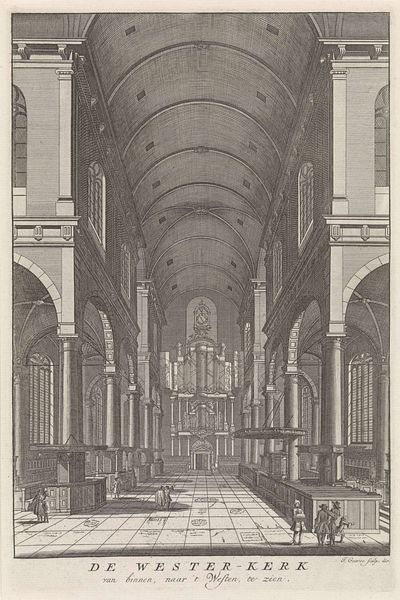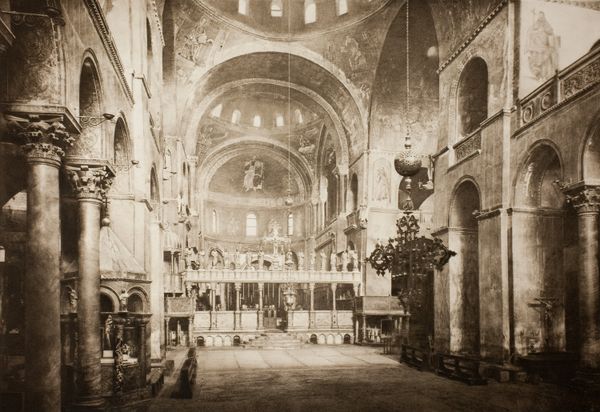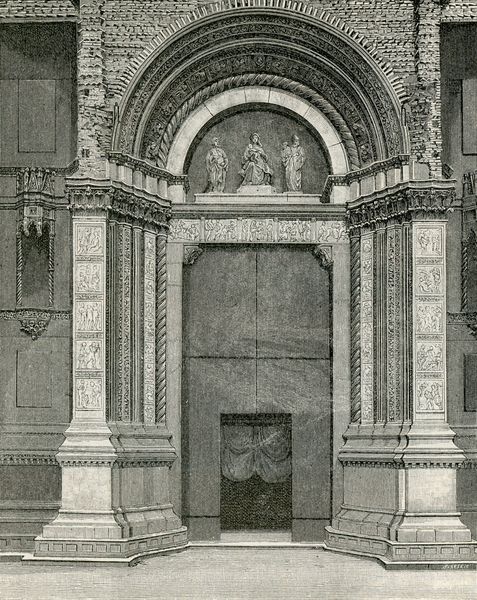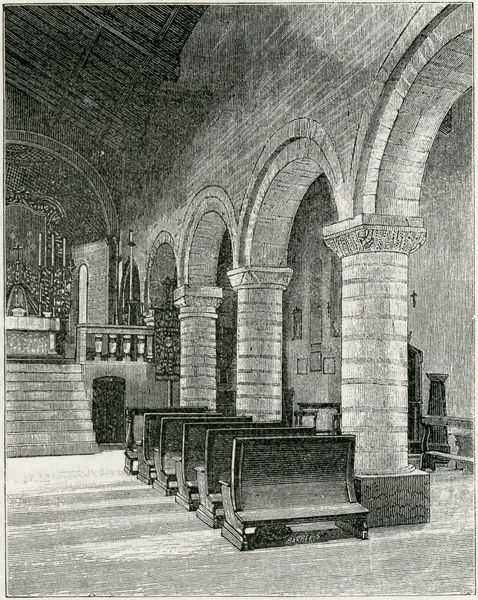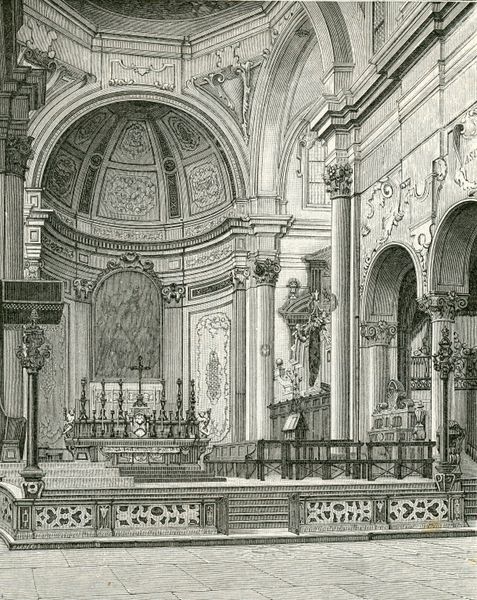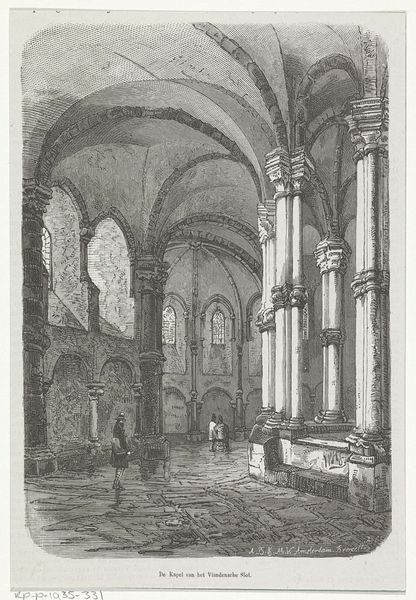
drawing, ink, architecture
#
drawing
#
charcoal drawing
#
ink
#
geometric
#
architecture
Copyright: Public domain
Editor: Here we have Giuseppe Barberis’ "Interno Della Chiesa Di San Nicola," created in 1893 using ink and charcoal. There’s a striking stillness and solemnity to the drawing; I'm curious to hear your insights on this piece. What social or historical narratives might we be seeing here? Curator: Indeed, this church interior is ripe with social context. Consider the late 19th century, a time of great upheaval as religious institutions grappled with secularization, scientific advancement and changing social structures. Spaces such as this church were important and visible strongholds in a changing culture. How do you think the artist uses perspective and composition to convey this message? Editor: The symmetry, perhaps? And the emphasis on height—it makes the viewer feel small. Is that a commentary on power dynamics at play? Curator: Exactly! And think about who *had* power and consider also those that *desired* power, perhaps lacked access to the space or representation within it. In the church's visual framework, Barberis implicitly underscores these tensions. Also, this church is rendered in incredible detail. I wonder what’s he trying to suggest by carefully recording every arch and column? Editor: Maybe he’s emphasizing the church’s enduring presence, meticulously documenting its structure to resist the forces of change. Was Barberis involved with any political or cultural movements that may be influencing his art? Curator: It’s likely he was, given the intellectual climate of the time. The level of detail could be interpreted as an act of preservation, even defiance, in a world hurtling towards modernity. A recording for the future, almost like photography but with intention behind every intentional stroke of the charcoal. Editor: It’s amazing how a seemingly straightforward depiction of a church interior can be such a complex commentary on its time! I hadn't thought about it that way before. Curator: Precisely. This is where art history transcends simple observation. Art is never really neutral; it’s always embedded in a complex network of cultural forces. That’s the crucial role art plays in society, acting as both reflection and instigator of change.
Comments
No comments
Be the first to comment and join the conversation on the ultimate creative platform.
